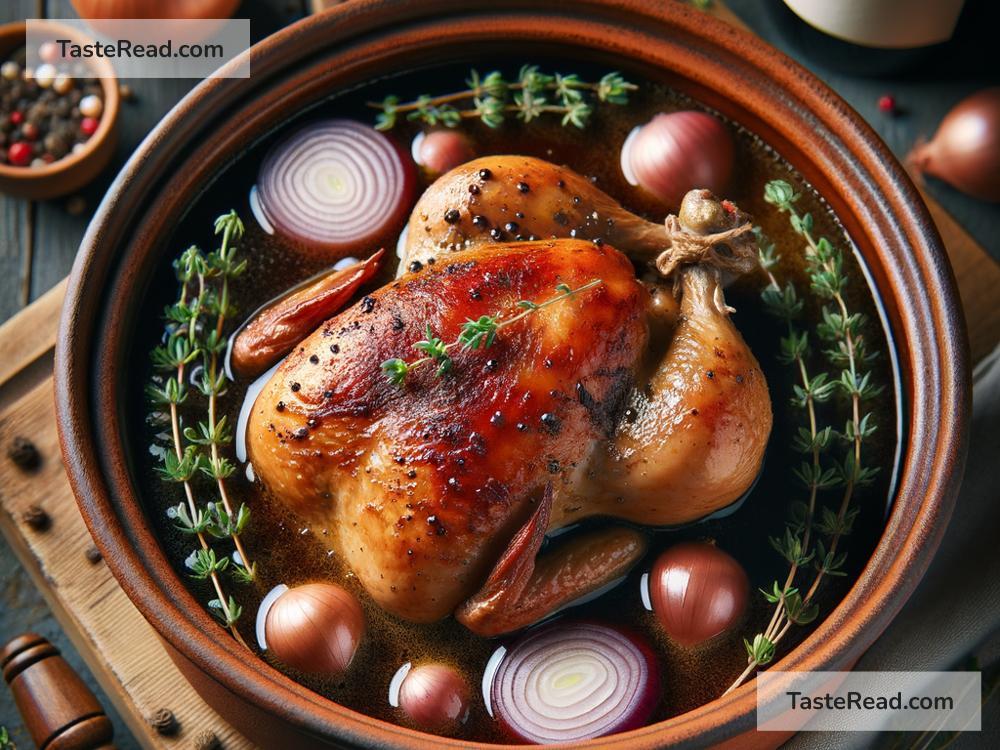How the French Coq au Vin Became a Traditional Favorite
In the heart of French cuisine lies a dish as rustic as it is elegant, as traditional as it is beloved. Coq au Vin, literally translating to “rooster in wine,” is a culinary delight that has woven its way through the tapestry of French cooking to emerge as a traditional favorite. But how did this dish, with its simple ingredients and countryside origins, become a hallmark of fine French dining? Let’s take a journey through time to uncover the story of Coq au Vin and how it captured the hearts of food lovers around the world.
The Humble Beginnings
The origins of Coq au Vin can be traced back to ancient times, long before France was known as France. It is believed that the Gauls, the Celtic people living in the region during the Iron Age, were among the first to cook poultry in wine. This method of cooking was not just about creating a delicious meal but also about making the tough meat of older birds more tender and palatable. Wine, a staple of the Gaul diet, was the perfect marinade and cooking liquid to achieve this transformation.
As centuries passed, this basic method of cooking poultry in wine evolved, incorporating local ingredients and regional variations. However, it wasn’t until the Middle Ages that the dish began to resemble the Coq au Vin we know today. Cooks started adding onions, mushrooms, and occasionally bacon to the pot, enriching the flavor and texture of the sauce.
The Recipe Takes Shape
Despite its long history, Coq au Vin was not officially documented in French cookbooks until the 20th century. This oversight was perhaps due to the dish’s status as a humble, rustic meal rather than sophisticated cuisine. However, as French chefs began to celebrate and elevate the country’s regional dishes, Coq au Vin finally received the recognition it deserved.
The classic recipe calls for a rooster or older chicken, which has a more developed flavor but tougher meat, making it well-suited to slow cooking. The bird is marinated in red wine, typically a local varietal like Burgundy, along with brandy or cognac, onions, garlic, and herbs such as thyme and bay leaf. After marinating, the chicken is braised slowly with the marinade and additional ingredients like pearl onions, mushrooms, and lardons (small strips or cubes of pork fat).
Regional Variations and Global Fame
While Burgundy may claim the most famous version of Coq au Vin, other regions of France have their own takes on the dish, showcasing the diversity of French cuisine. In Alsace, for example, chefs might use Riesling to create a lighter, more aromatic sauce. In southern France, a dash of Mediterranean herbs and olives can give the dish a Provencal twist.
Coq au Vin’s journey from a peasant’s meal to a worldwide classic is a testament to the power of rustic, comfort food to transcend its origins. The dish began to gather international fame in the mid-20th century, thanks in part to the efforts of chefs and food writers like Julia Child, who introduced French cuisine to the American public. Child’s recipes for Coq au Vin, presented with passion and precision, invited home cooks to explore the delights of French cooking, making the dish a beloved staple well beyond France’s borders.
Why Coq au Vin Remains a Favorite
There’s something about Coq au Vin that speaks to the soul of comfort food: the deeply flavored, wine-infused sauce, the tender meat falling off the bone, the rich history woven into each bite. It’s a dish that requires patience and care, qualities that are often reflected in the best traditional foods around the world.
Moreover, Coq au Vin embodies the essence of French cooking – the ability to take simple, local ingredients and elevate them into something extraordinary. It’s a celebration of flavor, history, and the joy of sharing a hearty meal with loved ones. Whether served in a cozy countryside inn or a chic urban bistro, Coq au Vin stands as a symbol of culinary heritage, a dish that has endured the test of time to become a beloved classic.

